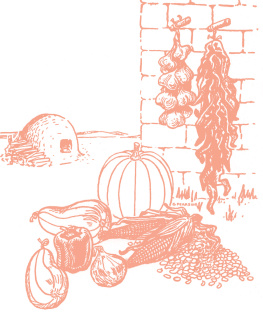Historic Cookery
Authentic New Mexican Food
Fabiola Cabeza de Baca Gilbert

Historic Cookery
Authentic New Mexican Food
Digital Edition 1.0
Text 2019 La Galeria de los Artesanos
Originally published in 1931.
All rights reserved. No part of this book may be reproduced by any means whatsoever without written permission from the publisher, except brief portions quoted for purpose of review.
Gibbs Smith
P.O. Box 667
Layton, Utah 84041
Orders: 1.800.835.4993
www.gibbs-smith.com
ISBN: 978-1-4236-5162-8
Preface
Historic Cookery, which first appeared in 1931, may have been the earliest cookbook of New Mexican food to be published. Many of the recipes were heirlooms from the author's family and others were collected from villagers in northern New Mexico. Fabiola Cabeza de Baca Gilbert's cookbook has been credited with the popularization of cooking with chile that led directly to America's love of native New Mexican foods.
In traditional recipes there were no set rules for the preparation of food. The cook was expected to learn the recipes from her relatives. One of the great contributions of Historic Cookery is that for the first time the non-native cook was given exact amounts and measures for the preparation of New Mexican food.
The author gives complete recipes for chile sauces, corn dishes, meats, cheese, eggs, and vegetables as well as salads, soups, breads, desserts, and beverages.
Fabiola Cabeza de Baca Gilbert was born near Las Vegas, New Mexico in 1894. She was a noted educator, writer, and home economist.

Mrs. Fabiola C. de Baca Gilbert
Home Demonstration Agent Emeritus
Historic Cookery
This little book will help you get acquainted with real New Mexican dishes. New Mexico is a land of changes. Its blue skies of morning may be its red skies of evening. There have been changes in its people, in its customs and culture, and naturally in its food habits. The recipes in Historic Cookery are a product of the past and presentan amalgamation of Indian, Spanish, Mexican, and American. They are typically New Mexican.
Your experiments in New Mexican cookery can be fascinating. Remember, though, that when you try any of these recipes, you should be prepared to spend plenty of time. Guisar, which has no exact English equivalent, is the most popular word in the native homemaker's vocabulary. Roughly translated, it means to dress up food, perhaps only by adding a little onion or a pinch of oregano; good food always deserves a finishing touch. Food must never taste flat, but it willif it's not guisado.
In recent years, New Mexican foods have become increasingly popular. That's why you may have to stand in line when you eat in restaurants that specialize in New Mexican dishes. Why this new popularity? The principal reason, of course, is that the food is good. Another is that recent research has proved that many of our basic foodschile, beans, purslane, lamb's quarters, goat's cheese, and whole grain cereals, for exampleare highly nutritious.
Try the recipes. And when you do, think of New Mexico's golden days, of red chile drying in the sun, of clean-swept yards, outdoor ovens, and adobe houses on the landscape. Remember the green valleys where good things grow. And think too of families sitting happily at the tablesbecause good food and good cheer are natural compadres and because, as the Spanish proverb says, a full stomach makes a happy man. Buen provecho, amigos.
Salsas de Chile
(Chile Sauces)
Since many New Mexican dishes require a little chile sauce, it is appropriate to explain its preparation first. Ground or powdered chile may be purchased, but care must be taken that the product is pure. Sauce prepared from chile pods is more satisfactory.
Chile Sauce I
Chile Sauce A
3 tablespoons fat
2 tablespoons flour
1 clove garlic, chopped
8 tablespoons chile powder
2 cups hot water
1 teaspoon salt
Melt fat, add flour and garlic. Brown well. Add chile powder and blend. Slowly add water. Stir in salt and cook until thick.
Chile Sauce B
24 chile pods
1 quart boiling water
1 teaspoon salt
1 tablespoon fat
1 tablespoon minced onion
1 clove garlic, chopped
1 teaspoon oregano
Wash chile pods; remove stems, seeds, and white veins. Put in a kettle and pour boiling water over them. Cook until tender. Pass through a food mill or fruit press until all the pulp has been removed from the skins. Add as much of the water in which it was boiled as is needed for desired consistency. (A good consistency for chile is that similar to tomato sauce.) Put on stove, add salt, fat, onion, garlic, and oregano. Bring to a boil.
Note The use of your electric blender for making chile sauce will save you time, and you will get more sauce from the pods than by any other method.
To make Remove stems, seeds, and veins from pods. Place pods in a warm oven (200 degrees F), being careful that chile pods do not scorch, for about 10 minutes, stirring often and leaving oven door open. Remove chile pods from oven, add enough warm water to cover, and let soak for 15 minutes. Place chile pods and seasoning in the blender and add enough water to cover, leaving about one inch space or more in the glass container. Blend for 2 minutes. If sauce is too thick, add more water, if there is space, and blend one minute or until skins disappear completely. Remove from container and add enough water to give desired consistency.
Sixteen large chile pods will yield about 1 quart of sauce. For this amount, use 1 clove garlic, 1 tablespoon chopped onion, 1 teaspoon salt, and 1 teaspoon oregano for seasoning.
Chile Sauce with Tomatoes II
1 tablespoon chopped onion
2 cloves garlic, chopped
3 tablespoons olive oil or fat
6 medium-size fresh tomatoes
8 tablespoons powdered chile or 1 cup
1 tablespoon oregano
1 teaspoon salt
1 teaspoon vinegar
Fry onion and garlic in oil or fat. Add tomatoes; cook until thick. Add chile and seasoning. (1 cup may be used instead of powdered chile.) Cook for 5 minutes.
Sweet Chile Sauce III
2 quarts ripe tomatoes
4 pods green chile
1 pod red chile
4 small onions
1 tablespoon salt
1/2 teaspoon ginger
6 tablespoons brown sugar

















